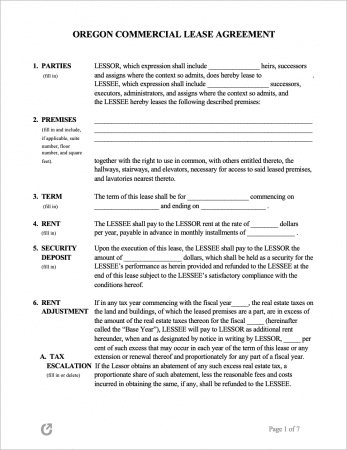
The Oregon Rental Lease Agreements are documents that establish a legally binding relationship where consistent payments are exchanged for the right to use residential or commercial property. The contracts are formed between a landlord (the “lessor”) and tenants (the “lessee(s)”). The average rental term is twelve (12) months, although the agreement can be edited to reflect any length desired by the parties. The contracts cover several topics relating to both parties, such as rental payments, utility responsibilities, pets, furnishings, default, security deposits, landlord/tenant rights, and much more.

Commercial Lease Agreement – Consist of legal clauses/conditions that solely apply to the leasing of property to business-tenants.
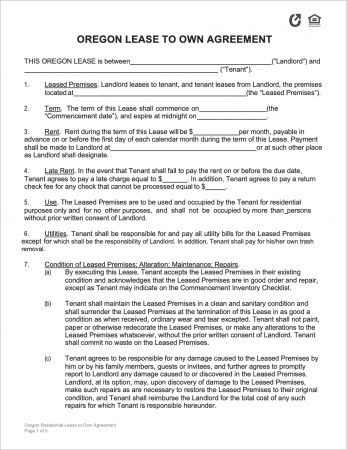
Lease to Own Agreement – Contains a clause that gives tenants the *option* to purchase the rented property at the end of the lease’s term.
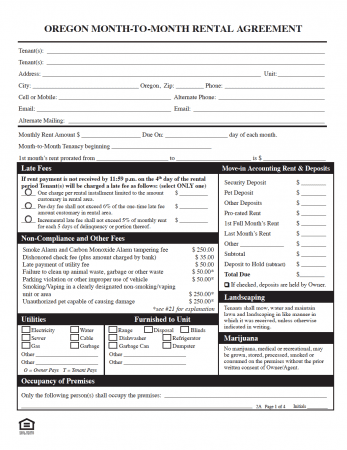
Month-to-Month Rental Agreement – Offers greater flexibility in comparison to a fixed-term rental contract. Either the landlord or tenant(s) can terminate the agreement so long they give one (1) month of notice.
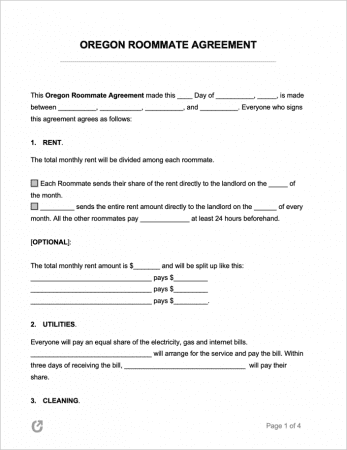
Roommate Agreement – Used for establishing rental-wide rules on quiet hours, guests, pets, utility payments, and more. Goes a long way in preventing roommate conflict.
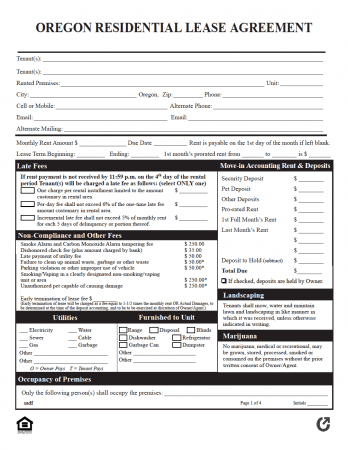
Standard Residential Lease Agreement – Once signed by all parties, locks tenants into a yearly (12-month) lease contract. The most commonly used rental form in the state.
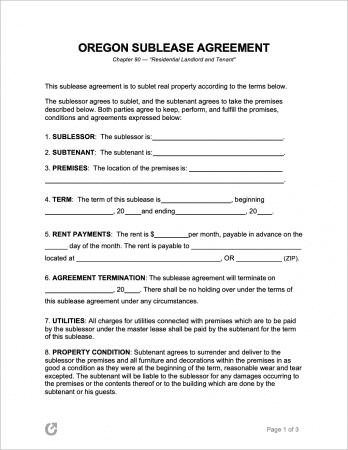
Sublease Agreement – Functions as a secondary lease, allowing a tenant to re-rent their leased unit to another tenant. The original tenant maintains all responsibility until the lease’s end.
An Oregon Lease Agreement is a form used for securing one (1) or more tenants into an obligation to make regular rental payments, in exchange for giving them the right to live or work in the rental unit. The form is completed upon the successful screening of the tenants, which can be done via the use of an Oregon-specific rental application.
Laws
Landlord-Tenant Guides / Handbooks
As outlined by § 90.220(7)(a), rent must be paid at the time and place agreed upon by the landlord and tenant(s). Unless otherwise agreed in the lease, rent must be paid at in equal monthly or weekly installments at the beginning of each month or week, depending on whether the lease is structured as a month-to-month or week-to-week contract.
In accordance with § 90.260(1), tenants have four (4) days grace period before a landlord may charge a late fee for the late payment of rent.
Emergency (§ 90.322(b)): In emergency situations, landlords are permitted to enter the rental dwelling at any time, without the consent of the tenant(s).
Non-Emergency (§ 90.322(b)): To access the property in non-emergency situations, the landlord must provide the tenant with at least twenty-four (24) hours’ notice of their intent to enter, unless there is an agreement between the landlord and the tenant to the contrary. Landlords can only enter at reasonable times.
Maximum: State law does not specify a limit to the amount a landlord can require a tenant to pay for a security deposit. According to § 90.300, landlords cannot alter the rental contract to require the tenant to pay a new or increased security deposit during the first year of renting. If the landlord wishes to charge a new or increased security deposit after the first year, they may do so as long as they give the tenant at least three (3) months to pay the new deposit.
Pet Deposit (§ 90.300(4)): Landlords can charge tenants that have one (1) or more pets an additional pet deposit. The deposit is not applicable to tenants with service animals.
Returning to Tenant (§ 90.300(13)): Landlords must return security deposits no later than thirty-one (31) days after the tenancy ends and the tenant delivers possession of the rental to the landlord.
Deposit Interest: No statute.
Uses of the Deposit (§ 90.300(7)): Deductions made from security deposits must be for one (1) of the following two (2) reasons: